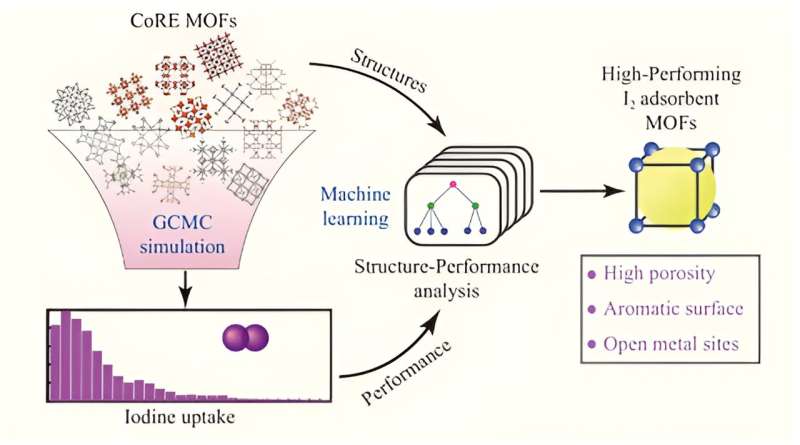This article has been reviewed according to Science X's editorial process and policies. Editors have highlighted the following attributes while ensuring the content's credibility:
fact-checked
trusted source
proofread
Harnessing cutting-edge tech for cleaner nuclear energy: Breakthrough in iodine capture

In a study published in the journal Frontiers of Environmental Science & Engineering, researchers from Sichuan University have unveiled significant insights into the structure–performance relationships of metal–organic frameworks (MOFs). Their study not only sheds light on the complexities involved in the iodine uptake capabilities of MOFs but also emphasizes the necessity for a comprehensive, multifaceted analysis.
In this comprehensive study, researchers employed large-scale molecular simulation and machine learning (ML) to identify the most effective MOFs for capturing gaseous iodine. Utilizing a grand canonical Monte Carlo simulation across a database of 8,862 MOFs, the team was able to predict iodine uptake values and pinpoint the top 10 MOFs, visualizing their specific adsorption sites.
Further employing ML, they established vital structure–property relationships, linking MOFs' structural and chemical features to their iodine capture efficiency. This study not only revealed key insights into the MOFs' structure-performance relationships, demonstrating a strong correlation between certain geometric features like large cavity size and surface area and enhanced iodine uptake, but also highlighted the necessity of multifactorial analysis. This approach was crucial in understanding that no single feature could solely predict a MOF's iodine uptake capability, marking a significant advancement in the field of environmental material design.
This research establishes a comprehensive framework for creating advanced MOF adsorbents, enhancing the capture and recovery of radioactive iodine and similar volatile environmental hazards. It presents a significant stride in improving nuclear fuel reprocessing and management, substantially contributing to radiochemistry and the pursuit of sustainable nuclear energy.
More information: Min Cheng et al, A large-scale screening of metal-organic frameworks for iodine capture combining molecular simulation and machine learning, Frontiers of Environmental Science & Engineering (2023). DOI: 10.1007/s11783-023-1748-3
Provided by Chinese Academy of Sciences





















